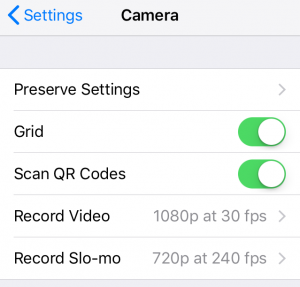As a recruiter, you have a lot to pay attention to. You move at 100 miles an hour drumming up job orders from clients and calling, screening, and interviewing candidates. The last thing you want to do is take time away from the activities that get you paid to think about metrics… Which is unfortunate, because spending a few minutes looking at the right metrics in the morning can save you hours later in the day.
The operative word in that last sentence is right. Too many recruiters abandon hope of getting value from data because they waste time digging through numbers that don’t provide any actionable information.
On a day-to-day basis, there are only three metrics recruiters need to know to manage their time more effectively.
1. Open Job Orders

Your list of open job orders is a concrete method for tracking and prioritizing your daily work. By spending a few minutes assessing which job orders have the most forward momentum and which ones are at risk of falling through the cracks, you’ll know exactly where you can spend your time most effectively for the day.
By surveying your open job orders when you get in each morning and focusing your work on the ones that have a high-probability of closing first, you greatly improve your ability to make consistent placements.
2. Job Order Pipeline

Once you know which job orders to focus on for the day, the next metric you should look at is job order pipeline. Specifically, keep tabs on how many job orders you have in each stage of your pipeline.
If your job orders are all lumped in one stage of your pipeline, you’re in for trouble. Look at this metric daily to check in on two things:
- You have enough pipeline to cover your bookings target.
- You have enough late stage pipeline to hit short term bookings goals, and enough early stage pipeline to hit long term bookings goals.
If you’re short on job orders, start prospecting for new business. If all your open job orders are bunched at one end of the spectrum, put in work to advance them through your process and add new early stage job orders to maintain a consistent revenue stream.
3. Recruiting Activity

The final daily metric to pay attention to is the most granular: Recruiting activity. Your daily cold calls, emails, and in-face meetings are the same as your morning run — you won’t always like doing it, but you’ll be a lot better off in the long run if you do.
It’s important to track your daily activity so that you know how you stack up to your peers. Activity metrics are useless in isolation, but they reveal a lot about what works for your team and what doesn’t when you put everyone’s daily activity head to head.
Take advantage of that fact, and compare what you’re doing on a daily basis to other top-performing recruiters in your office. You’ll quickly find patterns of behavior that you can emulate to make more placements.
These are your three essential daily metrics, but it’s worth your time to dig deeper and assess underlying performance trends beyond these basics. Download our eBook on the 10 Must Ask Questions for Staffing and Recruiting to learn the weekly and monthly metrics that will enable you to supercharge your recruiting performance.
Business & Finance Articles on Business 2 Community
(122)








